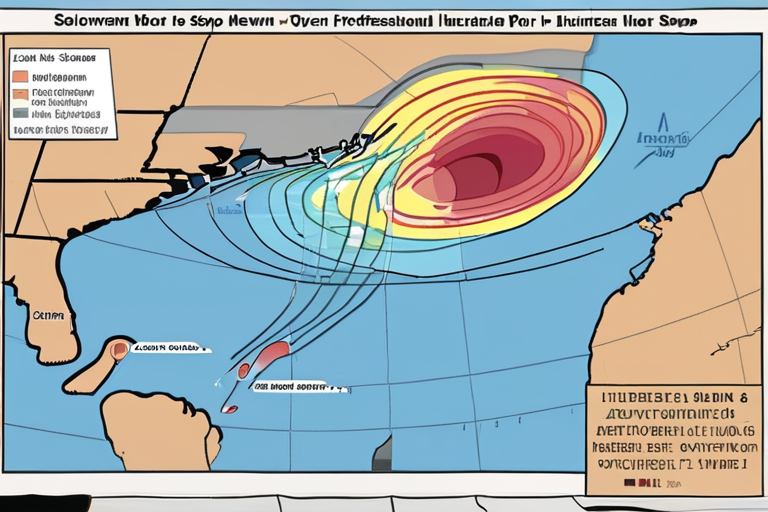Hurricane Season Isn't Shutdown: A Busy Week Looms for Meteorologists
As the government shutdown continues to dominate headlines, a separate storm is brewing over the Atlantic Ocean, threatening the Leeward Islands. Tropical Storm Jerry, which formed on Tuesday, October 7, 2025, has intensified and is expected to move westward, prompting concerns among meteorologists.
According to the National Hurricane Center (NHC), Tropical Storm Jerry will not affect the U.S. mainland, but its trajectory poses a threat to the Windward Islands. "The storm remains far from land, roughly 900 miles east of the Windward Islands," said an NHC spokesperson. "All of the satellite intensity estimates have increased, and both the NOAA and Air Force Hurricane Hunters are scheduled to investigate Jerry tomorrow."
Meanwhile, another nameless coastal storm is expected to take shape off the eastern coast of the United States, adding to the already busy week for meteorologists. In the eastern Pacific, Hurricane Priscilla and another storm loom, further complicating the forecast.
Despite the government shutdown, which has left many federal agencies operating with reduced staff, meteorologists are working around the clock to monitor these storms. "We're doing our best to provide accurate forecasts despite the challenges posed by the shutdown," said Dr. Marshall Shepherd, a senior meteorologist at the University of Georgia. "Our priority is public safety, and we'll continue to do everything in our power to ensure that people are prepared for any potential impacts."
The Atlantic hurricane season officially runs from June 1 to November 30, but this year's season has been particularly active. According to data from the National Oceanic and Atmospheric Administration (NOAA), there have been 12 named storms so far, with several more expected in the coming weeks.
As Tropical Storm Jerry continues to move westward, residents of the Leeward Islands are advised to monitor local weather reports and follow evacuation orders if necessary. The NHC will continue to provide updates on the storm's trajectory and intensity.
In related news, the government shutdown has raised concerns about the impact on disaster preparedness and response efforts. "The shutdown is a concern for us because it could limit our ability to respond quickly in the event of a disaster," said an official from the Federal Emergency Management Agency (FEMA).
As the week unfolds, meteorologists will be closely monitoring Tropical Storm Jerry and other developing storms. With several more named storms expected in the coming weeks, this year's hurricane season is shaping up to be one of the busiest on record.
Background:
The Atlantic hurricane season officially runs from June 1 to November 30, but this year's season has been particularly active. According to data from the National Oceanic and Atmospheric Administration (NOAA), there have been 12 named storms so far, with several more expected in the coming weeks.
Additional Perspectives:
Dr. Shepherd noted that while the government shutdown poses challenges for meteorologists, it will not impact their ability to provide accurate forecasts. "We're doing our best to provide accurate forecasts despite the challenges posed by the shutdown," he said.
In contrast, some critics argue that the shutdown has already had a negative impact on disaster preparedness and response efforts. "The shutdown is a concern for us because it could limit our ability to respond quickly in the event of a disaster," said an official from the Federal Emergency Management Agency (FEMA).
Current Status:
Tropical Storm Jerry continues to move westward, posing a threat to the Leeward Islands. The NHC will continue to provide updates on the storm's trajectory and intensity.
Next Developments:
As Tropical Storm Jerry continues to move westward, residents of the Leeward Islands are advised to monitor local weather reports and follow evacuation orders if necessary. The NHC will continue to provide updates on the storm's trajectory and intensity.
*Reporting by Forbes.*



 Hoppi
Hoppi

 Hoppi
Hoppi

 Hoppi
Hoppi

 Hoppi
Hoppi

 Hoppi
Hoppi

 Hoppi
Hoppi











